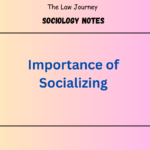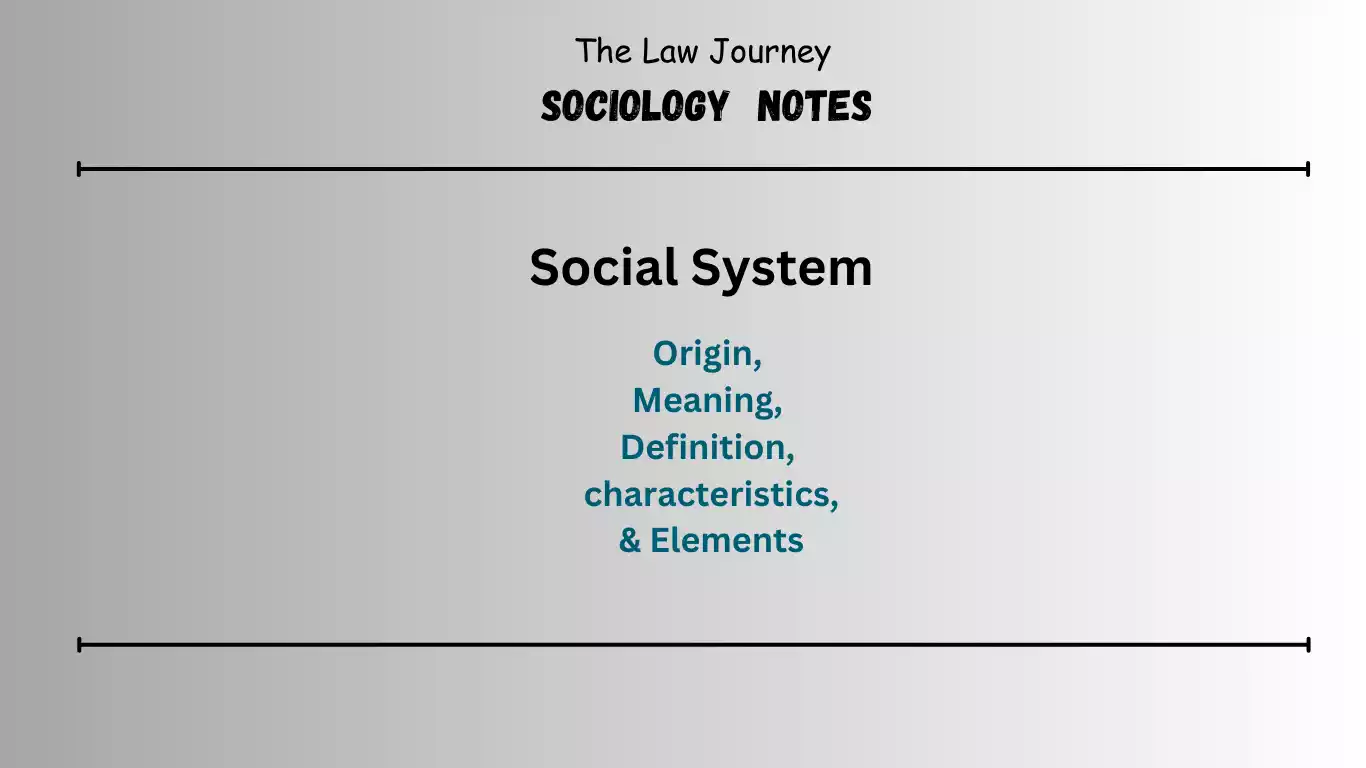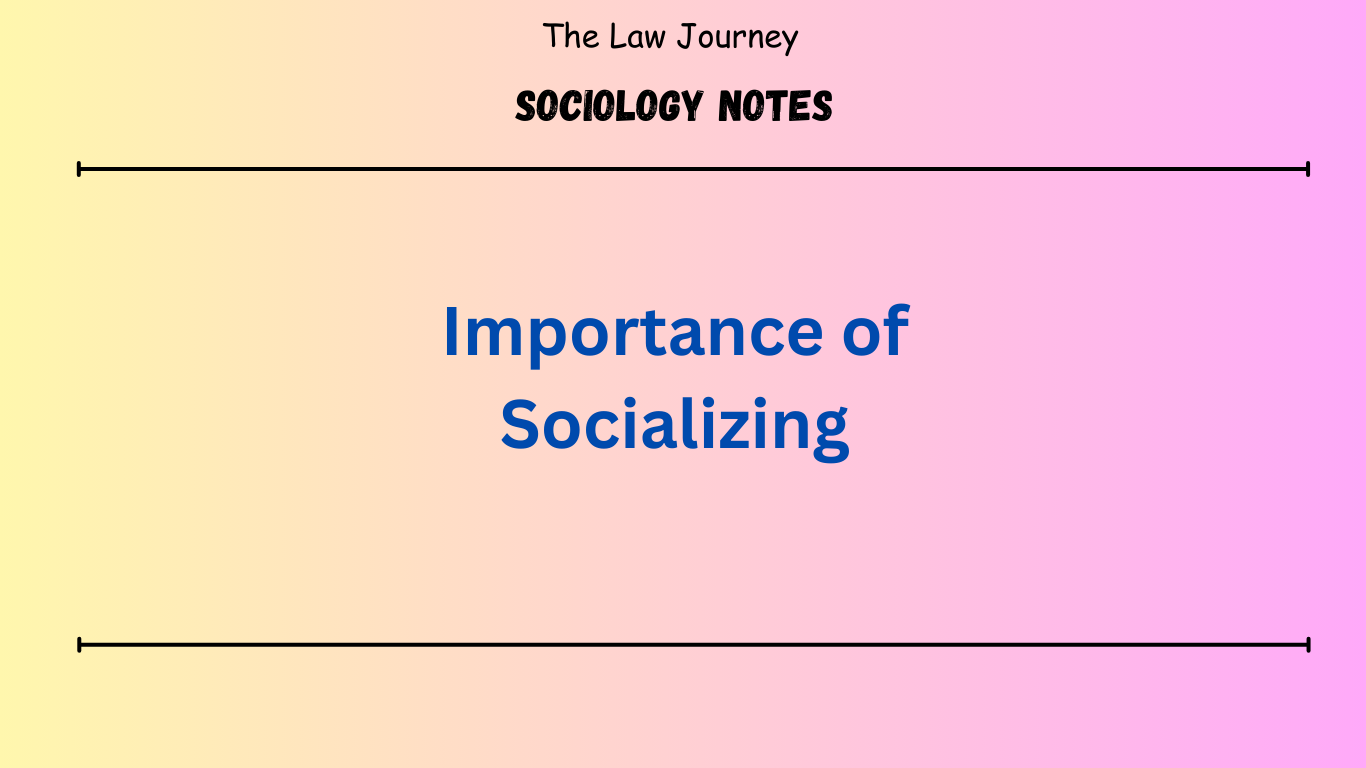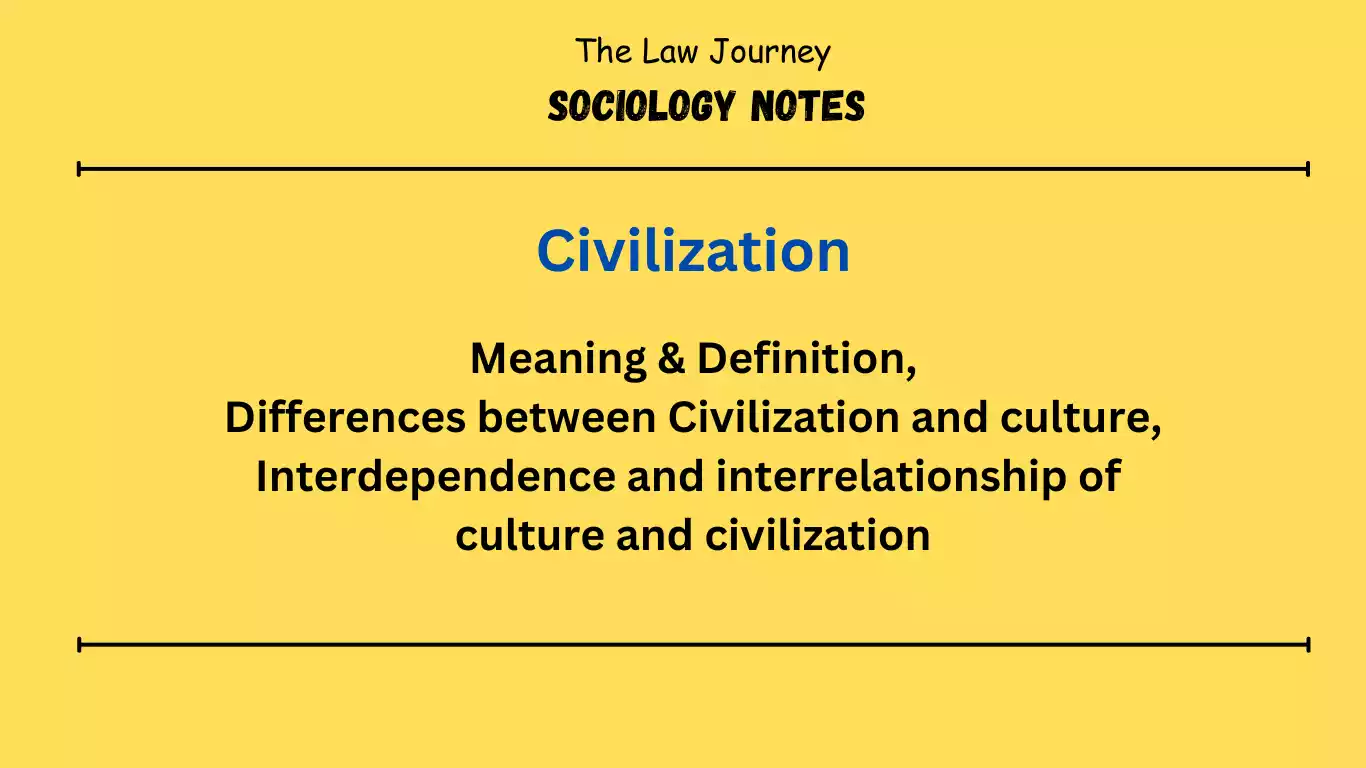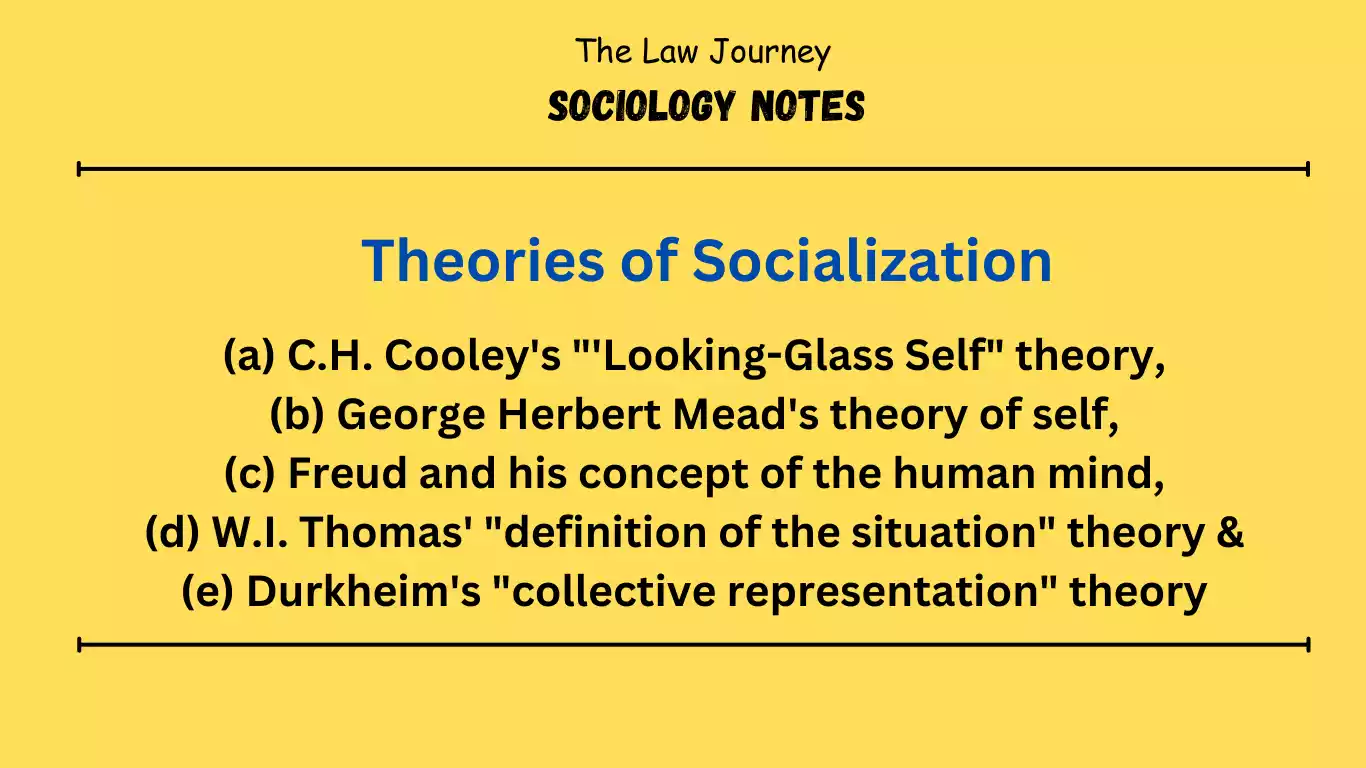Social System – Biological thinking has influenced many sociologists. Herbert Spencer, who was greatly influenced by the views of Charles Darwin, created an organic analogy by comparing society to a human organization. From classical times to the Middle Ages, writers were fascinated by this organic similarity.
The studies of human physiology and anatomy carried out by scientists also impressed many sociologists. Research by Walter B. Canon and L.J. Henderson and others demonstrated the importance of the interrelationships of the parts and organs of the human body. This idea inspired many sociologists to view society as a “system.”
Meaning of system
Currently, the term “social system” is often used in sociology. Before understanding the term “social system”, we need to know what the word “system” means.
(i) According to Oxford Dictionary, the term ‘system’ represents “a group of things or parts working together in a regular relation”.
(ii)As Robert A. Dahl says, “Any collection of real objects that interact in some way with one another can be considered a system: a galaxy, a football team, a legislature, a political party”.
(iii) “A System is any collection of interrelated parts, objects, things or organisms”.
Five Points About Any System
The term “system” refers to the following points or elements:
(a) The system specifies an ordered arrangement of parts. It consists of interconnected parts. These parts may have specific functions.
(b) The System May Have Its Own Limitations to determine what is inside a particular system and what is outside of it, you must establish the boundaries of that system.
(c) A system can be an element or subsystem of another system. For example, a city is a subsystem of his Thaluk, a Thaluk is a subsystem of a district, which happens to be a subsystem of a province, and so on.
(d) Calling something a system is an abstract or analytical view of something concrete. A system is just an aspect of something abstracted from reality for the purpose of analysis.
(e) Systems concepts are applicable to the study of organic and inorganic reality. The term “system” refers to organic realities such as the human digestive, circulatory, and nervous systems. It is also used to study inorganic realities such as political tribes, economic systems, industrial systems, educational systems, social systems, etc. ,Such.
Example of the human body as a system
The human body is a good example of a system. This will help you understand the term “system” and how it represents an ordered arrangement of different parts. The human body has different organs and systems that play different roles. We have organs that absorb food, breathe air, and eliminate waste products. There are organs for sight, hearing, taste, and smell.
The circulatory system supplies blood to different parts of the body. The nervous system stimulates and controls the activities of its various parts and the “whole”. The digestive system digests the food you ingest. Similarly, different glandular systems perform different functions. It is important to note that every organ in the human body is connected to every other organ with different systems and functions.
There are interrelationships and interdependencies. As a result, the human body maintains its unity and balance, maintaining balance between all organs and systems. The relationships between these parts of the body are systematically organized, forming a system.
Origin of the term “social system”
Biological thinking has influenced many sociologists. Herbert Spencer, who was greatly influenced by the views of Charles Darwin, created an organic analogy by comparing society to a human organization. From classical times to the Middle Ages, writers were fascinated by this organic similarity.
The studies of human physiology and anatomy carried out by scientists also impressed many sociologists. Research by Walter B. Canon and L.J. Henderson and others demonstrated the importance of the interrelationships of the parts and organs of the human body. This idea inspired many sociologists to view society as a “system.”
As A.R., Radcliffe-Brown points out that Montesguy was the first to formulate and use the concept of “social system” in the mid-18th century. Montesquieu’s theory states that “all the features of social life are integrated into a coherent whole.”
As a law student, Montesquieu devoted himself to the study of law. He wanted to show that the laws of society are related to the political constitution, economic life, religion, climate, population, manners and customs, and what he called the “general spirit” (esprit generale). is. . His research systematically examines the connections between them.
By understanding the characteristics of social life, we can expand our understanding of human society. The major social analysts of his 19th century, such as Comte, Karl Marx, Herbert Spencer, and Emile Durkheim, had their own ideas about social systems and the relationships between social units. However, they never used “social system” as a keyword in their works.
Meaning of social systems
Human society is a network of human interactions and interactions. Interactions between individuals take place under conditions such that such an interaction process can be called a system. A system refers to an orderly arrangement of parts.
A social system refers to an ordered arrangement of parts or components of society. human interaction. Individuals influence each other in the process of interaction. Their interrelationships and interactions follow a particular pattern called a “social system.”
However, this concept is not limited to interpersonal relationships. It also refers to the analysis of groups, organizations, societies, and intersocial entities. For example, you can use it to analyze universities, states, the United Nations, etc. used. As a social system with a structure made up of interconnected parts.
As David Popenoe pointed out, “A social system can refer to any type of social group, from a group of two friends to a large, complex society.” It is widely used in sociology because it helps us think about how social units combine to form a whole and the fundamental similarities between all forms of social interaction.
You can compare a high school social system to a corporate social system or a family to a football team. Each is a social unit in which people pursue specific goals in different ways depending on the situation and as a group share a common sense of identity.
The term “social system” was most clearly and confidently used in modern functionalism. But it also had roots in nineteenth-century social thought. “Social theories that treat social relations, groups, and societies as a series of interconnected parts that serve to maintain some kind of boundary or unity of parts are based, explicitly or implicitly, on the concept of social systems.
” The main representative of the most modern theory of “social systems” was Talcott Parsons. Parsons, in his books The Structure of Social Activity and Outline of Social Systems, attempted to explain the concept of social systems in a more scientific and rational manner.
Definition of social system
- According to David Popenoe, “A social system is a set of persons or groups who interact with one another; the set is conceived of as a social unit distinct from the particular persons who compose it”.
- “A social system is the system constituted by the interaction of a plurality of individual actors whose relations to each other are mutually oriented…[i.e., are defined and mediated by a system of culturally structural and shared expectations]”-Source: “A Dictionary of Social Sciences” By Julius Gould and William-L-Kolb.
- “A social system is defined in terms of two or more social actors engaged in more or less stable interaction within a bounded environment”.
- W.F. Ogburn has simplified Talcott Parsons’ definition of social system in the following way: “A social system may be defined as a plurality of individuals interacting with each other according to shared cultural norms and meanings”.
- Duncan Mitchell in his A Dictionary of Sociology writes: “A social system basically consists of two or more individuals interacting directly or indirectly in a bounded situation”. There may be physical or territorial boundaries, but the fundamental sociological point of reference is that the individuals are oriented, in a wide sense, to a common focus or interrelated focus”.
Characteristics of social systems
Our social system concept consists of the following characteristics:
(i) A social system consists of two or more individuals within which established individuals are found Patterns of interaction.
(ii) individuals conduct their actions with regard to how others act or are likely to act;
(iii) individuals within the system behave in accordance with common cultural norms and values;
(iv) Individuals within the system act cooperatively to pursue common goals and rewards.
(v) “Social system” as a concept may refer to society as a whole or to a number of existing subsystems, such as the political system, the educational system, the economic system, the judicial system, etc. in society.
(vi) Social systems have their own boundaries that distinguish them from other social systems.
(vii) The term “social system” refers to a sociological concept developed to study society. In Weber’s words, he represents an “ideal type.”
Elements of social system
Social systems are made up of the actions of individual people. This involves the participation of actors in the process of interactive relationships.
it identifies two main aspects to this participation:
(1) positional and matrixial aspects; The positional aspect indicates the actor’s position in the social system, which can be called his status. The matrix aspect indicates the functional importance of the actor to the social system, which can be called his role. Therefore, a social system has three elements: (i) social action or law , (ii) actors, and (iii) status roles.
(i) Law.
Social activity or behavior is a process within a social system that motivates individuals, or individuals in the case of groups. The direction of action is closely related to achieving actor satisfaction. The behavior is not an unexpected response to a particular situation or stimulus. This shows that agents have a system of expectations regarding the agreement of their own needs.
An individual actor’s needs classification system has two dimensions: (i) the satisfaction dimension and (ii) the orientation dimension. The satisfaction aspect refers to what the actor gains from the interaction and what it costs him. The directional aspect refers to how he gets it. Both aspects must be present in a so-called social act.
(ii) Actor.
Actors are also important units of social systems. It is he who holds his position and plays his role. A social system requires a sufficient proportion of actors. These actors must be sufficiently motivated to act according to the requirements of the role system.
A social system must also meet the minimal needs of individual actors. The system must also ensure sufficient participation of actors. This means that there must be sufficient motivation to perform the tasks necessary for the development or survival of a social system. Acting and acting complement each other.
Actors must act according to the role assigned to them. He learns this through the socialization process. Social systems limit and regulate the needs and actions of actors. This happens through social control.
(iii) Role and status.
Social systems involve the participation of subjects in processes of interactive relationships. This involvement has two dimensions for her: (i) a role dimension and (ii) a status dimension. Role refers to the functional importance of an actor to a social system. Status refers to an actor’s position in a social system.
Actors have a high or low position in the social system and must play a certain role. Different roles assigned to the same status are better integrated into the system. Actors are divided into different roles. This distribution process was called “allocation” by Parsons. Correct distribution of roles among actors minimizes system problems.
The division of roles is also related to the issue of facility layout. The problem of institutions is actually also a problem of power. Because owning an institution means having economic or political power.
Social systems are therefore faced with the problem of the correct distribution of roles, the correct distribution of opportunities and rewards, and the correct distribution of economic and political power. If this allocation is done correctly, it can sustain itself, otherwise it may decline.
How the social system works
A social system is a system of interdependent behavioral processes. But the tendencies of the individuals are such that they may alter the established status of the social system. This may disturb the established interaction process of the system. It is, therefore, essential that some proper mechanisms are applied for maintaining the equilibrium between the various processes of social interaction.
These mechanisms have been classified by Individuals into two categories:
(i) Mechanisms of socialisation, and
(ii) Mechanisms of social control.
(iii) Socialisation.
Related Post
- Concept of Social Groups in Sociology
- RTI notes
- Political Notes
- Legal History Notes
- Law of Torts notes
- law project maker
- moot court memorial maker
- internship for law students
meaning of system ?
According to Oxford Dictionary, the term ‘system’ represents “a group of things or parts working together in a regular relation”.
Meaning of social systems ?
“A social system is defined in terms of two or more social actors engaged in more or less stable interaction within a bounded environment”.
Characteristics of social systems ?
(i) A social system consists of two or more individuals within which established individuals are found Patterns of interaction.
(ii) individuals conduct their actions with regard to how others act or are likely to act;
(iii) individuals within the system behave in accordance with common cultural norms and values;….
Reference Books
- C.N. Shankar Rao – Principle of sociology with an introduction to social thoughts
- Introduction to Sociology by Anthony Giddens
- A Dictionary of Sociology by John Scott
- Sociological Theory by George Ritzer
- Handbook of Indian Sociology by Veena Das
- Social Change in Modern India by M N Srinivas







